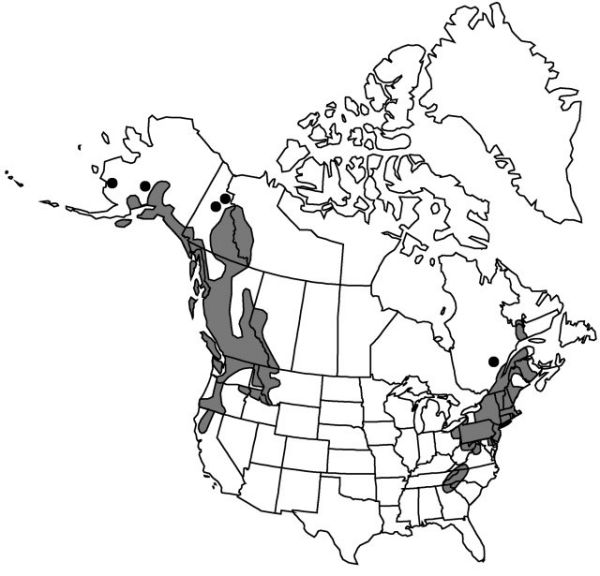Veratrum viride
Hort. Kew. 3: 422. 1789.
Stems 0.5–2 m, nearly glabrous to densely tomentose. Leaves ovate to elliptic, reduced distally, to lanceolate, 15–35 × 8–20 cm, glabrous to densely hairy, especially on abaxial surface. Inflorescences paniculate, with ascending to spreading or distinctly drooping (particularly in w North America) branches, 30–70 cm, tomentose; bracts lanceolate, shorter than flowers. Tepals deep green to yellowish, lanceolate to oblong-elliptic, narrowed to short, broad claw, 5–12 mm, tomentose adaxially, margins of both whorls or at least inner obviously erose-serrulate; gland 1, basal, dark green or yellowish green, V-shaped; ovary glabrous; pedicel 2–10 mm. Capsules oblong-ovoid, 2–3 cm, glabrous. Seeds flat, broadly winged, 8–10 mm.
Distribution

North America.
Discussion
Varieties 2 (2 in the flora).
Veratrum viride consists of two clearly related, disjunct populations, one in eastern and one in western North America. These were clearly separated by continental glaciation and have subsequently evolved in isolation. Nonetheless they show many critical features in common, and individual plants from either region occasionally show one or more features common to plants in the other. The two populations have been variously classified as separate species, varieties, or subspecies, or as a single taxon. We have chosen to recognize two distinctive, if subtle, varieties.
Selected References
None.
Key
| 1 | Inflorescence branches ascending to spreading, only rarely drooping; flowers spreading to rarely erect; east of 85th meridian. | Veratrum viride var. viride |
| 1 | Inflorescence branches spreading to commonly drooping; flowers erect; west of 110th meridian. | Veratrum viride var. eschscholzianum |